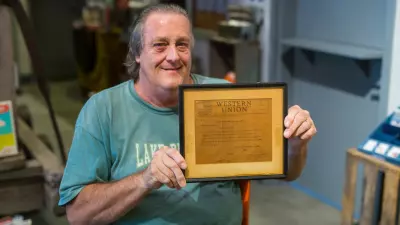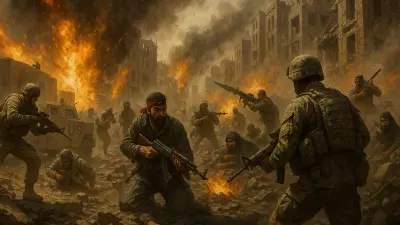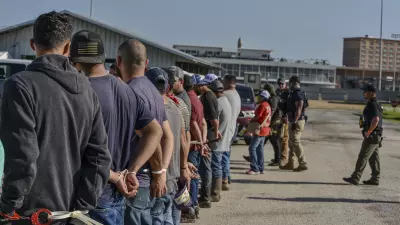Hulking machinery. Stacks of proudly made products. Vast, sprawling campuses.

The fossil record of an industrial past is often shaped by its collective outcomes, but the individual level — and the everyday level — can be just as compelling, as a number of Pennsylvania museums illustrate through ephemera and other items donated by family members and former workers themselves.
In the Pittsburgh region’s Homestead Borough, the Rivers of Steel National Heritage Area’s “From the Vault: Staff Picks from the Rivers of Steel Archives” highlights many individually donated items with personal stories behind them.
“Most of the things I picked were because of what it meant to the donor, that emotional attachment to place and to your history,” said Ron Baraff, the organization’s director of historic resources and facilities.
The exhibit is open through Aug. 31 at the Bost Building, which serves as the organization’s visitors’ center. Admission to the Bost Building is free through the end of 2021.
“Our collections are coming generally from the people who have these pieces of their lives, their family’s lives — their father, uncle, grandmother, whoever — that they saved all these years,” he said.
Many of the family-donated collections are one or two items, taken from garages or attics. Shape books — small manuals with specs and dimensions for specific products — are a frequent donation, brought in with a loved one’s meticulous notes, a record of decades of work and devotion.
Others, such as trophies for mill-sponsored teams, demonstrate a sense of community that often came with working at places such as Homestead Works or Jones and Laughlin Steel Company. Another favorite of Baraff’s, donated by third-generation steelworker and author Ken Kobus, represents a way of living: an apron his mother wore every day while she was making dinner, in the moments before his father came home from work.
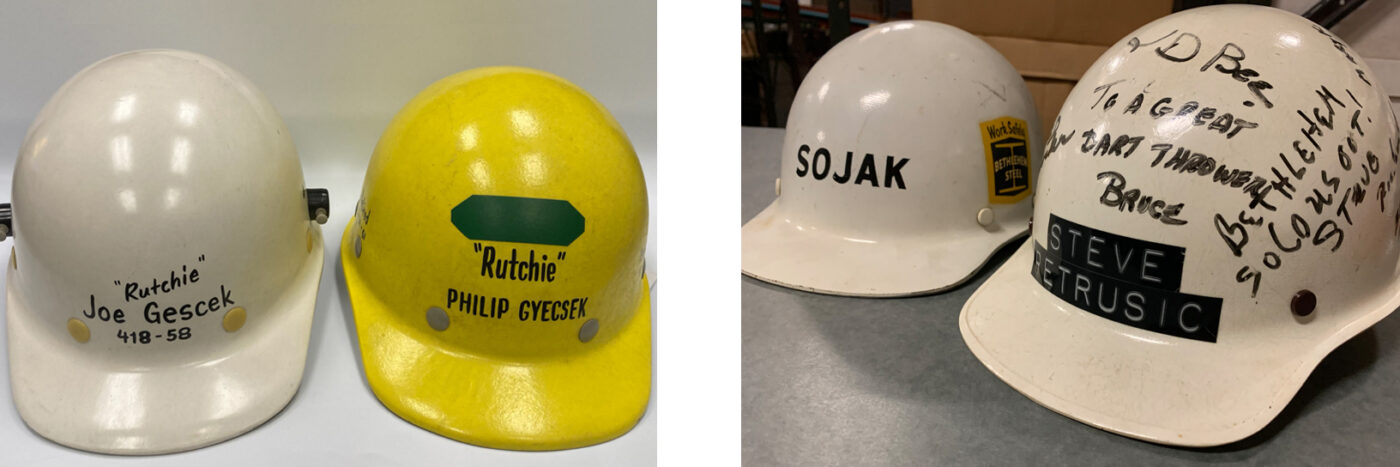
Similarly, the Johnstown Area Heritage Association has collected uniforms, hard hats and lunchboxes from those who worked in the four divisions of the former Bethlehem Steel Johnstown Plant.
Mementos such as the sample pieces for final furnace firings are other typical items that family members now entrust to the keepers of history, JAHA Executive Director Richard Burkett said. Many of those donated artifacts will be weaved into an upcoming exhibit to complement the association’s Iron & Steel Gallery.
A few hours’ drive away, in Bethlehem, Pa., the National Museum of Industrial History, housed in the former Electric Repair Shop of the Bethlehem Steel plant site, incorporates personal artifacts from workers in a swath of different industries, from iron and steel to silk and textiles.
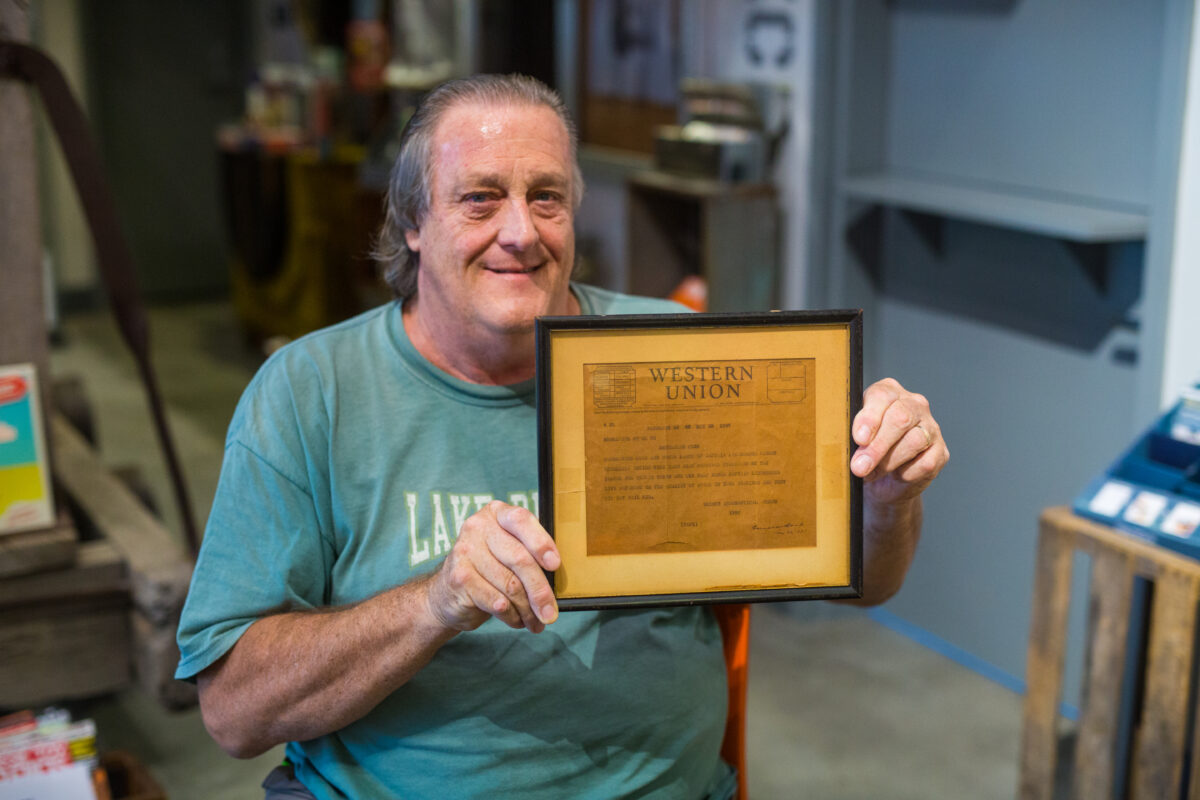
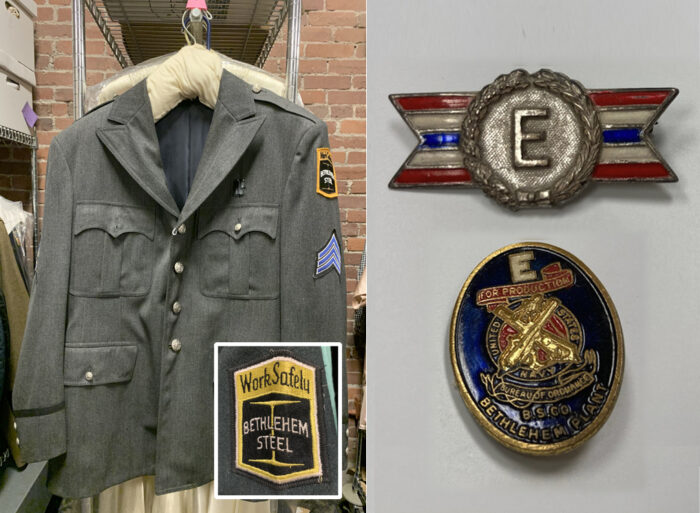
When the Bethlehem plant site’s assets were dispersed in 2003, not everything was cleared away. Many items ended up in garbage bins — and residents of what was once very much a company town were quick to nab them up in what the museum’s Curator of Collections Andria Zaia called a “crowdsourced” salvage initiative.
Now the museum fields calls almost weekly from family members interested in donating those tokens of life as it used to be. Tools, employee ID badges, awards for meeting production goals, and, of course, hard hats by the dozen, most inscribed with workers’ nicknames, all help paint a collective, but at the same time deeply personal, picture.
Zaia said the collection and curation of each of the hundreds of thousands of items in the museum’s archives requires a keen focus on storytelling.
“What we are mostly attracted to are those personal stories, where we can interject a human story in this wider industrial landscape,” she said.

